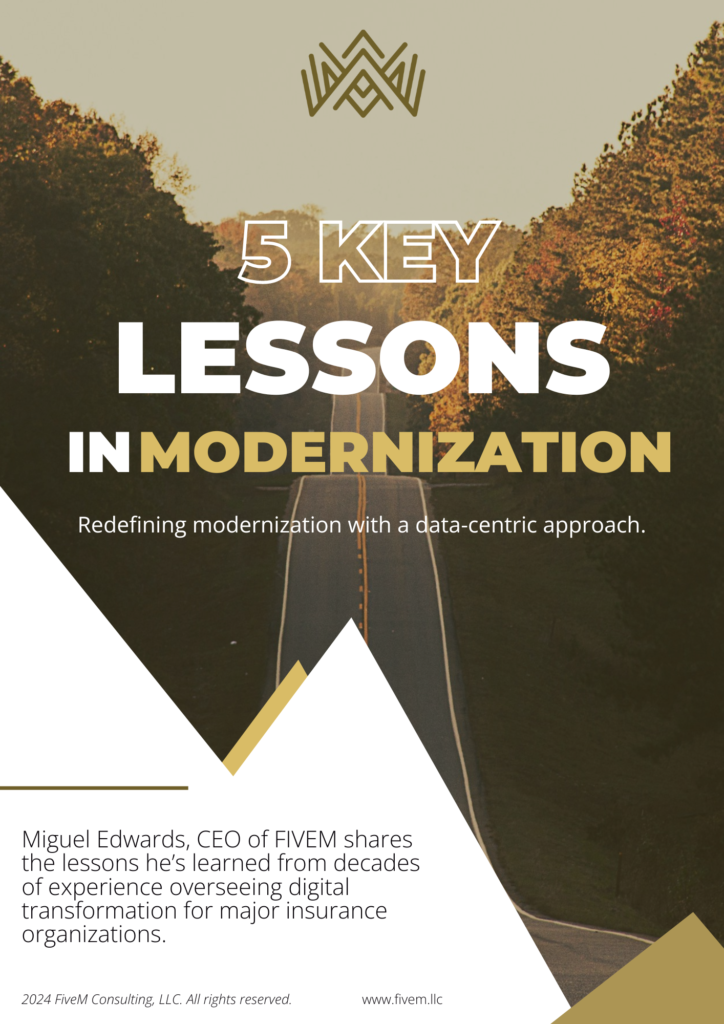Modernization in the insurance industry isn’t a new idea. Leaders across departments talk about AI-driven underwriting, digital platforms, and seamless customer experiences. They’ve got strategies, roadmaps, and even external consultants lined up. But here’s the problem: most of these plans never reach the finish line.
Studies show that 70 to 80 percent of large-scale modernization efforts fall short of their goals. The issue isn’t about lacking vision or ambition. It’s about something harder to spot internal blockers that quietly derail progress. These include outdated technology, resistant cultures, misaligned teams, and hesitant leadership at the very top.
Understanding these obstacles is the first step. Overcoming them? That takes courage, clarity, and consistent leadership. Let’s explore how modern insurance leaders are rising to the challenge.
When Incentives Undermine Innovation
One of the most overlooked problems in insurance modernization is internal misalignment. Many departments follow different goals. Sales teams might focus on broker relationships, while IT pushes for automation, and customer service tries to improve digital response times. These objectives often conflict, especially when they aren’t connected to the company’s modernization goals.
Let’s say a company shifts its sales strategy to focus more on digital channels. If brokers still earn rewards through traditional methods, they’ll naturally resist the change. They may smile and nod in meetings but keep doing things the old way. This creates a false sense of progress where innovation seems to be happening but isn’t actually taking hold.
Some insurers address this by building digital-first business units that operate with different rules. Others create compensation models that reward both traditional and digital efforts equally. Most importantly, successful companies connect performance metrics directly to modernization outcomes. This way, teams know exactly what success looks like and how to achieve it.
When goals, rewards, and roles all support the same mission, true modernization becomes possible.
The Hidden Cost of Playing It Safe
Insurance, by its nature, values caution. That mindset helps reduce risk in underwriting and claims but it also makes it harder to embrace change.
Inside many insurance firms, a deep resistance to new ideas exists. Employees often stick to what they know, even when better tools or methods are available. They may worry that automation will eliminate their roles or that digital systems will make their knowledge less valuable. These concerns don’t always surface in meetings, but they influence how teams act.
Forward-thinking leaders take these fears seriously. They talk openly about the reasons for change. They give teams time and space to learn new skills. Managers are trained not just to deliver messages, but to lead change themselves. Instead of pushing innovation from the top down, they invite people to shape it from within.
This approach builds trust and encourages employees to take part in the modernization rather than seeing it as something being done to them.
Legacy Tech: Still Running the Show?
Many insurers are still using core systems that were built decades ago. These platforms weren’t designed for today’s speed, complexity, or customer expectations. They’re hard to update, expensive to maintain, and nearly impossible to integrate with modern tools.
Because of this, up to 80 percent of IT budgets in the industry go toward maintaining legacy systems. That leaves little room for investing in new capabilities. The problem isn’t just cost, it’s how these systems keep data and departments disconnected. Claims, customer service, and underwriting might all run on separate platforms, creating silos that slow everything down.
The smartest insurers don’t try to fix everything at once. They start with small but strategic moves. Some switch to cloud-based platforms in phases. Others build new capabilities around their old systems using APIs or data lakes. Either way, they make changes that show value quickly like launching a mobile-friendly claims portal or improving digital self-service.
These wins create momentum. They also prove to stakeholders that progress is possible, even when working with outdated infrastructure.
Short-Term Thinking in the Boardroom
Modernization doesn’t just require action at the operational level. It also needs full support at the top. And here’s where many efforts fall apart.
Insurance boards often include experts in finance and compliance but very few in technology. While they might approve digital plans in principle, they hesitate when faced with large investments or long payback periods. Executives, too, may focus more on short-term performance than on building for the future.
To overcome this, leading companies change how they frame the conversation. They stop presenting technology as an IT project and start treating it as a business strategy. Digital tools aren’t just about efficiency, they’re about growing revenue, retaining customers, and staying competitive.
Some leaders invite outside experts to help educate the board. Others use clear dashboards that track real progress and highlight where the risks really lie not in spending, but in standing still. When boards see technology as the path to growth, they’re far more likely to support bold moves.
Building Long-Term Capability, Not One-Off Projects
Real modernization doesn’t come from a single project. It happens when change becomes part of how a company operates every day.
Organizations that succeed at modernization treat it as a continuous journey, not a one-time event. They start by creating a clear vision that everyone, from front-line employees to senior leaders can understand and support. They align systems and structures to support that vision. And they make space for learning, improvement, and feedback throughout the process.
Communication is constant. Teams are encouraged to share wins, highlight challenges, and adjust strategies as needed. Leaders celebrate progress and stay transparent about what’s next. Most importantly, they invest in people. Training, reskilling, and career growth are all part of the plan.
Over time, modernization stops being a goal and becomes a way of doing business.
Final Thought: It’s Time to Lead, Not Just Plan
Insurance modernization is about much more than upgrading systems or adopting new tools. It’s about shifting the mindset of an entire organization.
Hidden barriers, whether they’re cultural habits, tech limitations, or leadership hesitations won’t disappear on their own. But they can be overcome. With the right structure, clear communication, and strong leadership, insurers can create a company that’s ready for anything the future throws at it.
So the question isn’t whether modernization is possible. It’s whether you’re ready to lead it.





